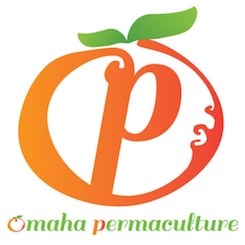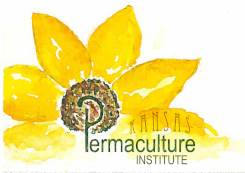[class taught August 26-28, 2014 at Harmony Park, Clark's Grove, MN]
Mark's intro: saw environmental tragedies of the '70s; quit engineering job to hitchhike to Alaska, ran out of money in Colorado and took job as caretaker for apt buildings, planted lots of edibles; while hitchhiking again got mugged, ran away and got a ride from a guy who just quit an engineering job to homestead in Alaska! Got married and farmed in Alaska just below the frost line, wrote "Restoration Agriculture"; has lived since age of 23 "on planet Earth" rather than in technology. got a degree in ecology, did environmental impact statements and ecological restoration, dissatisfied with arbitrary nature of these efforts.
Restoration Agriculture: "Real world permaculture for farmers"
http://forestag.com, restoration agriculture on Facebook
- All the gimmicky details are icing on the cake; what we need are the fundamentals.
- The word permaculture closes as many doors as it opens.
- Wanted to combine the concepts of restoration and agriculture because they are too often presented as being at odds with each other.
- Too many people take a PDC and apply details out of context because they don't grok the system thinking. Example: building a cob oven in a wet climate, when a stone oven would be more appropriate; rain barrels are not large enough for most situations, a swimming pool would be more appropriate. Front-yard gardens are not going to feed anybody; mineral supplements only, but need staple diet from elsewhere.
- Settlers destroyed abundance of North America by imposing preconceived notions of agriculture.
- Civilization arose as last ice age ended, mass extinction of megafauna. Grain & legume cultivation arose while glaciers were receding and new land was being exposed.
- Every society that has based its diet on annual plants has collapsed. Ancient cities weren't built on wastelands; the land went to waste after the cities were built.
- We're doing the same thing in North America, depleting diversity and topsoil.
- We're told it takes aeons to recharge the aquifers, yet somehow agricultural chemicals have got down there in just years.
- Earth's atmosphere right now is different than ever before, record droughts & floods create unpredictable conditions for farmers & ranchers to cope with.
- Chief difference between our agriculture and those that collapsed historically is that we've propped ours up with fossil fuel.
- Current conflicts in Middle East and elsewhere are understandable as ecological consequences of our resource dependence.
- Permaculture principle: observe & imitate nature; work with it rather than against it. Know your biome and its key plant communities. Know the difference between an observation and a concept. (ex: "invasive species.")
- Just because it takes 1000 apple seeds to get a palatable cultivar doesn't mean you shouldn't plant the seeds, it means you should plant as many as you can get your hands on!
Premise behind WI farm: prior to settlement, land was productive without any inputs. Can we design a farming system to operate this way? Can we produce staple crops (carbs, proteins, oils)? Be economically viable?
Few people have made it past page 58 of Yeomans's "Water for Every Farm," those who have & claim to have understood it all understood it differently.
- Identify your biome & keystone species first. Use as indicator species.
- Then do earthworks & water management. Water is the done nutrient plants can't do without.
- Next establish edible woody polycultures.
- Then fences & roads.
- Only then establish agroforestry practices. Manage for eternity. Adapt to changing climate.
Keyline design:
- Identify one or more keypoints in the landscape (where water accumulates) and build a pond to catch a massive rainfall event. Outfit with swales & berms if they fit your design objective. Additional swales go parallel to the first, to fit whatever machinery will be used. "drive-through ponds" accommodate equipment by filling in valleys with dams. Plow with subsoiler parallel to swales.
- Establish woody polycultures along swales and other water features.
- Only after permanent infrastructure is established, add gadgets like wind turbines, buildings, etc.
- Plant grasses on the subsoil plowed land and graze so that roots die back; plow again deeper, repeat.
"100% of the problems you have in an orchard are due to your concept of orchard and expecting nature to fit your concept."
Prairie and forest are not things, they are stable patterns in a shifting swirling ecosystem.
- Example of more-or-less naturally occurring food forest in eastern US: oak overstory, apples, hazelnut, stone fruit, raspberry/grape/currant/gooseberry, forage, animals, fungi. Animals are crucial, but if you plant these in community they cannot fail; they will maintain themselves.
- California example is the same, but with almonds and other temperate stone fruits!
- Oak savannas evolved to be abusively grazed by mastodons; cornfields can't handle any amount of grazing.
- Add livestock: all types together. They eat different things. Manage numbers to suit overall health of ecosystem.
- WI farm has been economically profitable since year 1. No spray ever.
- If you put no work into an orchard and get only 1 bushel/tree instead of 5, it's still a net profit.
- Alley cropping allows transition between mainstream agriculture and agroforestry.
- Can make diesel fuel from cider distillate (methanol) and hazelnut or soybean oil.
- Apples are harvested by machine in every country except China and the US. Plan for mechanization and grow the necessary fuel.
- "But there's no market for hazelnuts!" Ferrero Rocher imports hazelnuts from Turkey to make Nutella for North America.
- "The word 'problem' is 'profit' spelled incorrectly."
Site tour notes:
- It's impossible to make some observations because our concepts get in the way. Ex: no concept in Swahili for processes over time, such as plant growth.
- The scientific method begins with hypotheses, which can blind you to observation. Ex: what is light? whatever concept you use, it fits.
- Our senses register far more data than we can consciously handle.
- Larger properties are often easier to design than small ones. Observe how existing spaces are stacked. Trees behave differently depending on surroundings.
- Parking lot is a liability for the owners: "most of the time we just burn gas here" (mowing). Compacted soil floods easily.
- Need to diversify types of hosted events to improve public reputation.
- White mulberries have the highest protein of any berry.
- Keyline design is about observation and interaction with the landscape, not imposing concepts.
- QOTD (from Dan Halsey): Need a little more chainsaw and a little less yoga.
Yeoman's scale of permanence: climate, land shape, water, roads, trees, buildings, subdivision, soil.
Darren Doherty's REGEN10 very similar: climate, geography, water, access, forestry, buildings, fencing, soils, "PolyMarketing," energy. (PolyMarketing means combining low-volume-high-value and low-value-high-volume markets)
Biome maps are all different! use them as a tool.
Fire-dominated biomes (which is most of them in North America) were primarily human-managed. Before then, managed by mammoths & mastodons.
"Old growth" forests were a historical blip after the die-off of Native Americans; previously the land had been savannah since the ice age.
- "Nothing grows under black walnuts!" but the walnut growers are spending all their time eradicating stuff that grows under them… prunus spp., berries, grapes, fungi, forage, livestock. Some people find even apples grow fine under walnut.
- Hickory: prunus spp., persimmon/paw paw, berries, grape/passionfruit, fungi, forage, animals
- Pine: pine nuts, prunus spp., apples, serviceberry, hazelnut, blueberry, strawberry, raspberry, grape, wintergreen, fungi, forage, livestock.
"True" grasslands: many had established tree roots, just no tops due to burning.
- Woody agriculture doesn't necessarily require soil building. Put trees in the ground right away, soil will follow.
- Plant every variety and keep the ones suited to your location.
- If planting many trees, become a licensed dealer to buy wholesale.
- Livestock in the orchard will conveniently remove low branches that convey apple scab, just move them before they do damage.
- Daffodils and comfrey suppress grass and rodents below trees, attract pollinators at just the right time before apples bloom.
Organic Valley and other collaborative vendors have great benefits for member farmers beyond specialization: retirement accounts, veterinary services, oil press, etc. etc.
Eggs and water sprayed on trees are as effective at repelling deer as Sepp Holzer's bone sauce for a fraction of the price.
The economic system is part of the underlying system conditions you're working with. Work with it, not against it.
Water management
- Yeoman's farm has similar precipitation to Las Vegas, purchased as "rubbish land" in the 1950s, transformed with dozens of ponds, sold in 2007 for $52K/acre. We're not farmers, we're real estate developers.
- Yeoman's lesser-known book is The City Forest, available free online.
- A drop of water hitting exposed soil is (arguably) the most destructive force there is.
- Owen Hablutzel's Whirlwind Farm: did nothing to hardpan plain but subsoil plowing, grass grew in one year.
- Nobody knows what gravity is, but it's observably real, even though invisible. Similarly, we can test any number of unproven notions and get more results (confirming or disproving) than if we just wonder why/whether it works.
Countour lines are generally not parallel, causing problems for machinery. Yeoman's breakthrough was running parallel to a single contour line instead.
- Identifying the key point can be tricky and confusing. Look for wet/green spots in the landscape, spot where contour lines begin to space out after being tight together.
- The landscape has more than one key point, so if you don't own the main one, use what you have.
- Adjustment to Yeoman's system: grade initial ditch at 1% away from key point. "Drive-through" dams in secondary valleys to promote access by machinery.
- In dry climates, grade initial ditch toward key point to get more water in main dam.
- Plant trees on berms if too much water is a problem; in ditches if too little is a problem; on slope between for compromise.
- Factors influencing key line design: slope, soil type, permeability, intended use, and equipment. Also depth, type and structure of bedrock. Ask soil service for "dispersive clay" locations.
- For digging swales at farm scale, use a bulldozer with a 6-way blade.
- Alley width between swales is not random: determined by intended cropping system, equipment to be used, slope, soil type, max rainfall event (ever) & type. Area of alley plus area diverted to swale is the swale's catchment area.
- When building a system of ponds, start at the top of the landscape and work down. Otherwise a rain event could blow out the system.
- To size ponds (including depth of swales), calculate the catchment area of the swale, multiply by inches of max rainfall event.
- For purposes of government approval, you must specify that there is an outlet system as well as infiltration, even though the swale disperses the amount of flowing water. Provide level sills (spillways) large enough to safely overflow the entire catchment area above each sill.
- In clay soils, swales can be deeper with steeper sides; in sandy soils must be wider with gentler slopes.
- To allow animals & equipment to cross swales, make them wider & shallower at the crossing.
- Enough clay accumulates at key points to build a dam. It just always happens that way.
- Build the downhill side of dams shallow enough (usually 30˚) to avoid erosion in case the water tops the dam.
- When growing cash crop in the alleys between rows of trees, need to air-prune tree roots to keep them from the cash crop. The same subsoil plow that you use in the alleys anyway will take care of this for you.
Forget starting small & building from success. Starting small is permaculture's biggest failure. Start as large as possible and take risks. The worst that can happen is you go bankrupt and start over. Donald Trump has gone bankrupt at least twice. That is how the system works; you can make it work for you and for your goals.
Knowing that we have the ability to revegetate the world in 15 years at a profit, it would be irresponsible not to do it.
No vegetable producer in Organic Valley farms more than 5 acres, so "large" is relative to what crop you're growing.
You can have any number of bells & whistles on an annual crop farm and still have soil degradation because the system is unstable.
You can learn a lot about animal health by looking at feces; if your poop is yellow, you have too many carbs in your diet and are headed for pancreas/liver problems and diabetes.
Agroforestry is USDA-sponsored permaculture! official definition: the intentional combining of trees and livestock, crops, or forest-grown products to achieve economic, conservation, and ecological goals.
- Agriculture Secretary Tom Vilsack says agroforestry is the preferred agricultural model for the US.
- Permaculture is more involved than agroforestry, but agroforestry can be an "in" for talking with people who are already beholden to the USDA.
- Agroforestry can start small, with a single row of trees or even a clump in a field of annuals.
- Agroforestry practices: alley cropping, silvopasture, riparian buffers, windbreaks, and forest farming.
- USDA is also responsible for intentionally bringing in lots of troublesome species, such as eastern red cedar or Siberian elm, so they do make pretty epic mistakes.
- Current state-of-the-science USDA agroforestry is better than conventional agriculture but not good enough. It's up to us to improve it.
- Riparian buffers: trees & other vegetation on stream & river banks to regulate micro environments and buffer waterways from non-point-source pollution on adjacent land.
- Woody florals: "you can make more money selling sticks than you can selling produce." e.g. Red osier dogwood. People pay more for floral arrangements based on weight and height!
- Alley cropping: conditions will change every year; if they are ideal for soybeans now, will be too shady later and you will need a more shade-tolerant crop or a thinner row of trees. Spacing of trees within the row: prefer to start with tight spacing to try more genetic variants; thin out the less ideal ones to desired density.
- Row orientation: water is more important than sun. Sun orientation has been proven to be not statistically significant.
- Trees should be selected for site conditions; you can tweak microclimates on a small scale, but at agricultural scale it is not practical.
- All research to date shows increasing yields when switching to alley cropping, provided trees are root-pruned.
- Corn, beans, and alfalfa are all compatible with walnut.
- Silvopasture: intentional combining of trees, shrubs, forage, and livestock. Uncontrolled grazing in a natural woodland is not considered agroforestry. One lone tree in a pasture is also not agroforestry. Research shows 40-60% shade is ideal for forage quality.
- Animal maintenance: do not exceed carrying capacity! use mob-stocked rotational rather than continuous grazing. Remove livestock during wet periods to minimize compaction.
- Cattle can be easily trained to graze in a tight mob instead of as individuals. This is desirable behavior since they eat less selectively and trample undesirable plants into mulch.
- Treeprotection.org sells tree tubes at a fraction of retail.
- Establishing silvopasture in an established "woods" (overgrown with undesirable brush): use a "forestry mower" attachment on a skid-steer to clear the underbrush before seeding and grazing. "You are now responsible for any new trees, because the cows will mow them down."
- As sheep have decreased linearly in traditional cow pastures, weeds have increased exponentially.
- Pigs can graze in silvopasture as well as cows/sheep/goats if they have rings in their noses to prevent rooting.
- Chickens following cows will scatter the seeds which otherwise cows would refuse to eat next time.
- Harvest low-hanging apples; the pigs get the rest when they fall.
- Forest farming: intentional manipulation of forest canopy to improve understory crops. Mushrooms, flowers, medicinal plants. NOT wildcrafting.
- Many nuisance understory plants are medicinals - act as though you are a professional grower of these products and find buyers.
- To sell scion wood, need nursery license and careful records of which varieties are where.
- Log in to post comments




